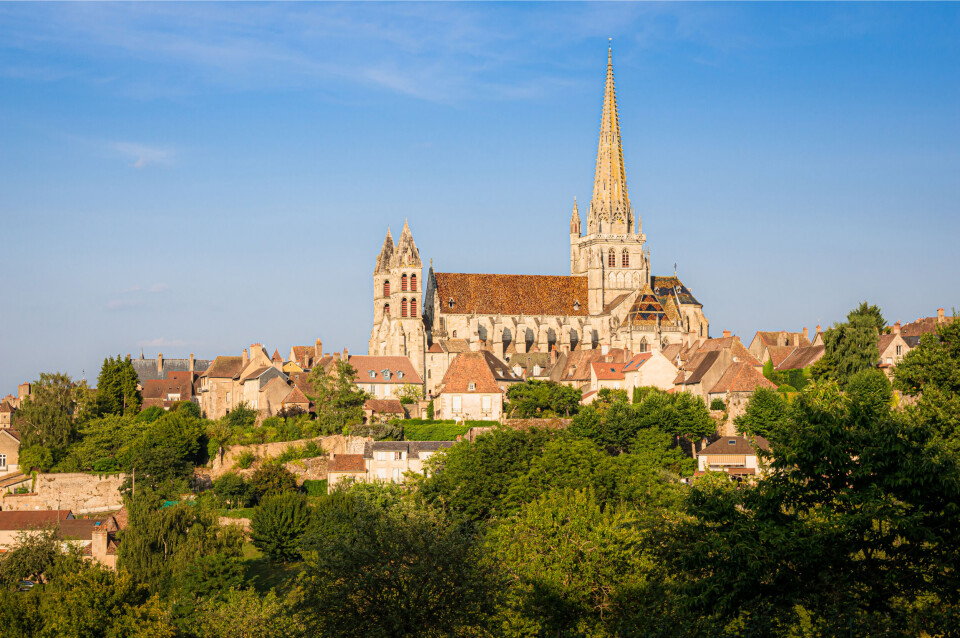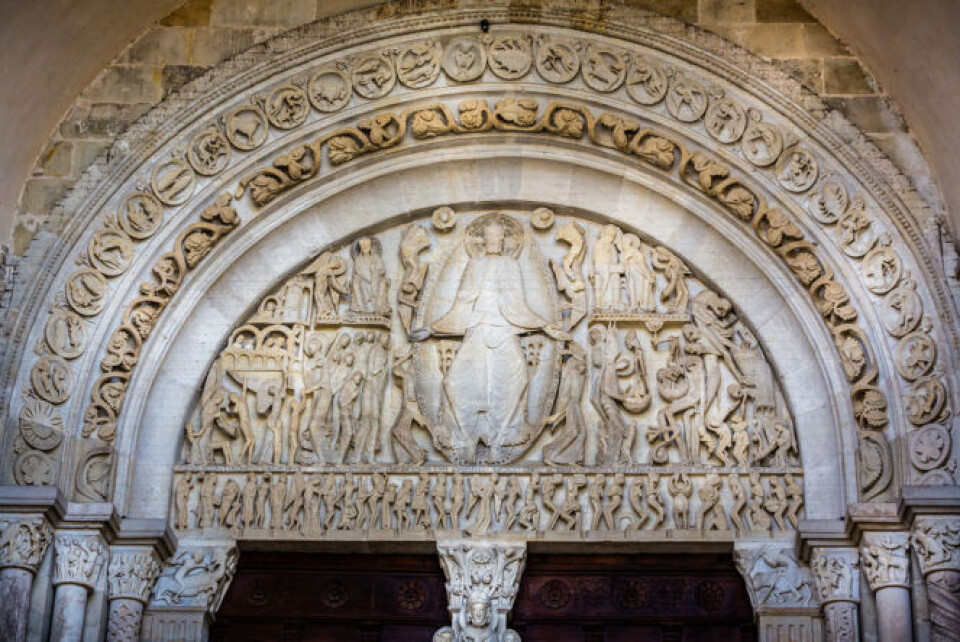-
Photos: 94 chateaux open their doors to visitors in Dordogne
The fifth Chateaux en Fête festival offers a chance to look around many impressive properties that are usually private
-
Martel: the medieval French town home to a 'truffle' train and lavender festival
The small town in the Lot offered refuge to an English throne heir until his death
-
Brittany lighthouse lens removal leads to public outcry
A petition gained over 20,000 signatures, highlighting the ongoing battle over the buildings' heritage in France
Medieval torture and salvation at Autun cathedral in France
Art historian Dr Julia Faiers explores the Romanesque carvings and lucrative history of Saint Lazarus’s holy relics at Autun cathedral in Saône-et-Loire

It is not every French town that owes its present cultural kudos to three Latin words. Yet the inscription Gislebertus hoc fecit (Gislebertus made this) above the main entrance to the cathedral of Saint-Lazare is the hook upon which thousands of tourists visit the Burgundian city of Autun each year.
But why the fuss over a name? Artists working in the medieval period often went unnamed, recognition by God the only reward they sought.
Gislebertus’s signature, carved in the twelfth century, therefore bucks the trend of medieval anonymity. Gislebertus boldly claimed ownership of the virtuoso sculpture above the cathedral’s main entrance, and even now in the twenty-first century, the Romanesque carvings for which Autun Cathedral is so famous will forever be linked to his name.
Yet the town’s architectural and sculptural splendours have not always been the main draw for visitors. In the first centuries of the last millennium, people came to Autun to venerate the relics of a canonised fifth-century bishop from Provence called Lazarus of Aix.
The church of Saint-Nazaire had served as the town’s central place of worship from the fifth century until the arrival of these relics around the year 1000.
So popular were Lazarus’s relics that there simply was not enough room in the church of Saint-Nazaire to accommodate all the pilgrims. Around 1120, the bishop of Autun, Etienne de Bâgé, therefore undertook the construction of a new, bigger cathedral, right next to the existing church. The bishop was clearly a canny businessman, for a larger church meant more pilgrims, and therefore more money, both for the cathedral and the town.
Perhaps it was for this reason that Lazarus of Aix morphed quickly into the cult of a different saint, who bore the same name but who possessed far greater star quality in the saintly hierarchy.
Thus the relics of the fifth-century bishop Lazarus were rebranded as those of Lazarus of Bethany, the brother of Mary Magdalen, whom Jesus raised from the dead.
The transformation of the cult attracted pilgrims in ever greater numbers. Work on the new cathedral progressed at speed in order to accommodate them. By all accounts construction was sufficiently advanced to allow the installation of Lazarus’s holy relics in the new cathedral in 1146.
Pilgrims seeking to venerate the relics of Jesus’s death-defying friend in the new cathedral made their solemn entry through a main entrance designed to shock and awe.
The main portal at the west end through which they passed told the story in carved stone of the Last Judgment. Christ sits in majesty at the centre of the tympanum (the semi-circular area above the doors), surrounded by angels or demons who accompany humans to heaven or hell.
The lintel below this frenetic scene shows the dead rising from their graves on Judgment Day, with an inscription that doesn’t mince its words: ‘May this terror frighten those who are bound by worldly error.
It will be true just as the horror of these images indicates.’ And, beneath Christ’s feet, the words that have led countless modern pilgrims to cross this threshold: Gislebertus hoc fecit.

Autun’s famous Last Judgment tympanum sculpture, made by—or in memory of—Gislebertus. Pic: Nigel Jarvis / Shutterstock
But have historians got it right? Was Gislebertus really the sculptor? A book by Linda Seidel about the history of Autun cathedral proposed another theory.
She argued that Gislebertus was more likely to have been a powerful tenth-century count who played a key role in securing the relics of Saint Lazarus. The inscription therefore commemorates not the artist but the patron. The language itself points to this theory.
In the medieval period, artists claiming authorship of a work through an inscription would use the words ‘me fecit’ (made me), not ‘hoc fecit’ (made this), which was a term more frequently applied to donors and patrons.
Given the crucial part Lazarus’s relics played in expanding the wealth of the cathedral, an inscription commemorating the person who acquired them is convincing. So it seems that the sculptor of these incredible works, like many others of his age, could be yet another ‘anonymous’.
Despite challenges to the identification of Autun’s master sculptor, visitors continue to marvel at the scenes of medieval torture and salvation.
If travelling to Autun is too difficult, however, armchair pilgrims can visit the cathedral website to take advantage of its high-resolution photo of the tympanum sculpture. Here you can zoom in to all the tiny details so easily missed when viewing from the ground.
Related stories:
Why Strasbourg’s cathedral is one of France’s greatest treasures
1,000 years of travel: Meandering history of France’s Bayeux Tapestry
Beaulieu-sur-Dordogne: Why pilgrims flock to this French beauty spot
























